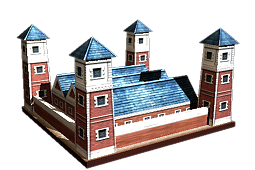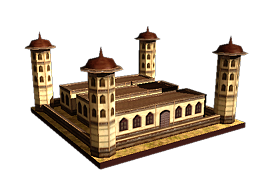Drill School (ETW building)
| Drill School | |||||||
|---|---|---|---|---|---|---|---|
| Category: | Army | ||||||
| Level: | 2 | ||||||
| Turns to build: | 3 | ||||||
| Building cost: | 2000 | ||||||
| |||||||
| Requires | |||||||
| Barracks | |||||||
| Technology | |||||||
| Military Syllabus | |||||||
| Enables | |||||||
| Military Academy | |||||||
A drill school creates the common practices for an army, and turns a collection of disparate forces into a precise and clockwork killing machine.
In an age when all battlefield manoeuvres must be performed exactly, drill is a necessary part of all military training. Constant repetition of the actions involved in loading and firing a piece are useful in themselves, but of more use is the unthinking obedience to superiors that is, literally, drilled into every man in the ranks. When a soldier is concentrating on his place in line and on not attracting the attention of his sergeant or officer, he will not worry about what the enemy might be doing. Drill has another benefit for an army too: men busy on the parade ground cannot be getting into trouble or finding a tavern!
In Britain, one aspect of 18th Century drill survives to this day in the form of a ceremonial parade called “Trooping the Colour”, carried out on the monarch’s official birthday on Horse Guards, in London. Originally, this parade was not a celebration but a practical exercise: the men needed to know what “the colours”, or flags, of their unit looked like. The fact that the monarch gets to review the soldiers is not the point! In battle, the men would need to be able to rally to, and then defend, these colours on command.




